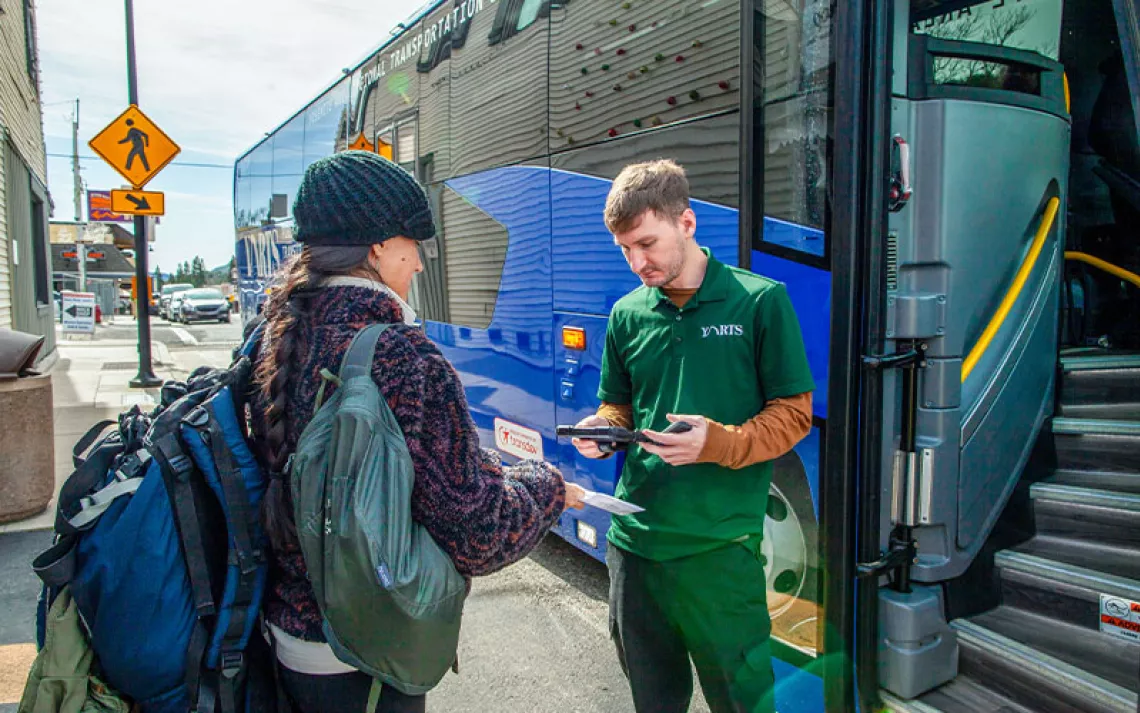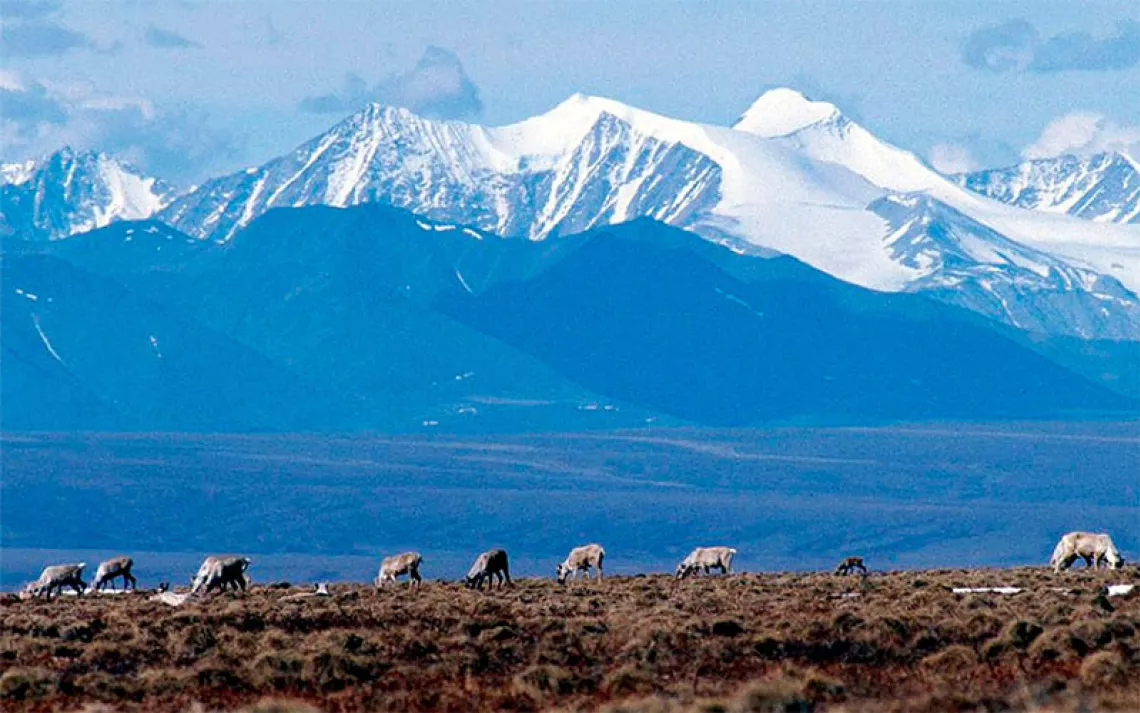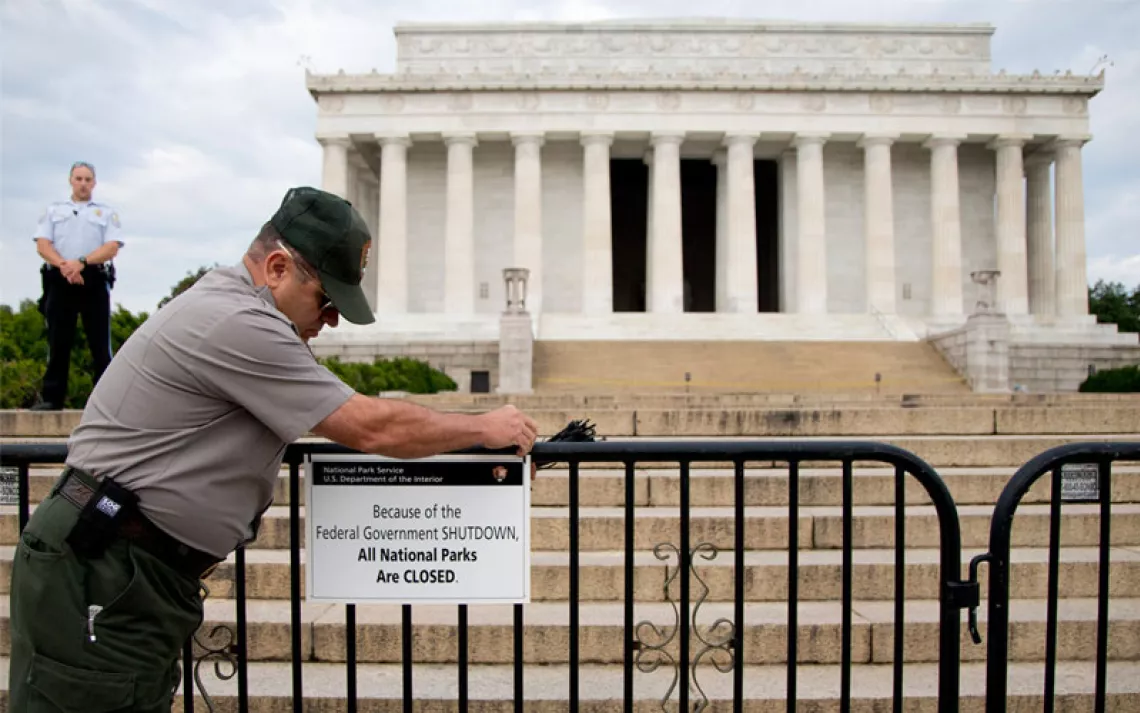Land Grab: Trump's Campaign Against Bears Ears National Monument
The Trump administration is trying to destroy a landmark Native American accomplishment
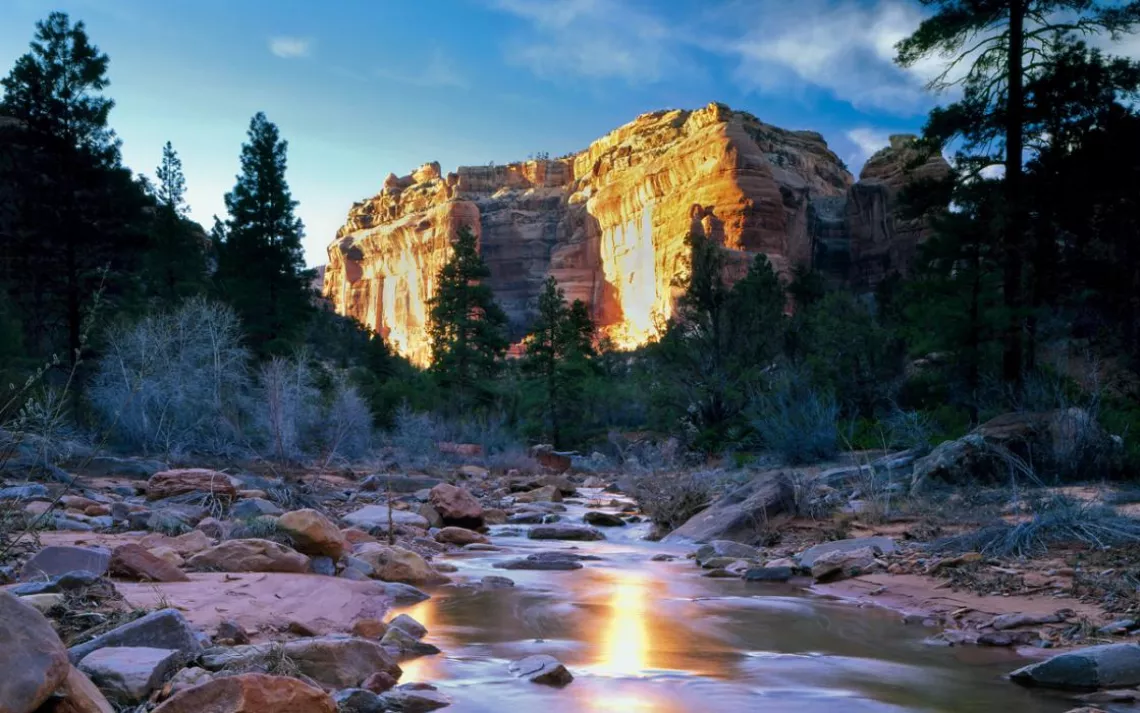
Arch Canyon, a 12-mile-long box canyon in Bears Ears National Monument, includes many pre-Columbian cliff dwellings. | Photo by Scott T Smith
I WAS STANDING ON THE EDGE of the world, the great shimmering red-orange and bruise-colored chasm opening below me. Ravens lifted off and rode the wind, tracing the edges of the canyon's clefts and curves. In our fractured time, during which the 45th president of the United States has managed to wriggle and tweet his way into even our private thoughts, I had begun to seek refuge not just in wild places but also in the life and writings of another Republican president. As it happens, that president, our 26th, was also New York City–born, famous for eating ravenously, and known for being imperious to the point of bullying. But that president was Mr. Trump's opposite in many other ways, one of the most striking being his attitude toward the natural world.
On May 6, 1903, not a hundred feet from where I was standing at the canyon's edge, Theodore Roosevelt gave a speech that environmentalists—a word yet to be invented—would come to deem as important as Churchill's "Blood, Toil, Tears, and Sweat" or Lincoln's Gettysburg Address. It was a perfect match of subject and stage. In the open air on the canyon's ledge, the president declaimed on the miracle of nature he was trying to save. The five words the speech is most remembered for would become synonymous with the Grand Canyon, and become a touchstone for protecting other wild landscapes.
"Leave it as it is," Roosevelt told the crowd. "You cannot improve on it. The ages have been at work on it, and man can only mar it. What you can do is to keep it for your children, your children's children, and for all who come after you, as one of the great sights which every American, if he can travel at all, should see."
Leave it as it is. While the crowd must have been delighted that the president of the United States was there, not everyone was pleased with this message. The enemies of the message then were the same as the enemies of the message now. People thinking solely in the short term. Developers and entrepreneurs trying to make a buck off the big hole. Ranchers and miners. Extractors. Leave it as it is? But this chasm is our meal ticket, our big chance.
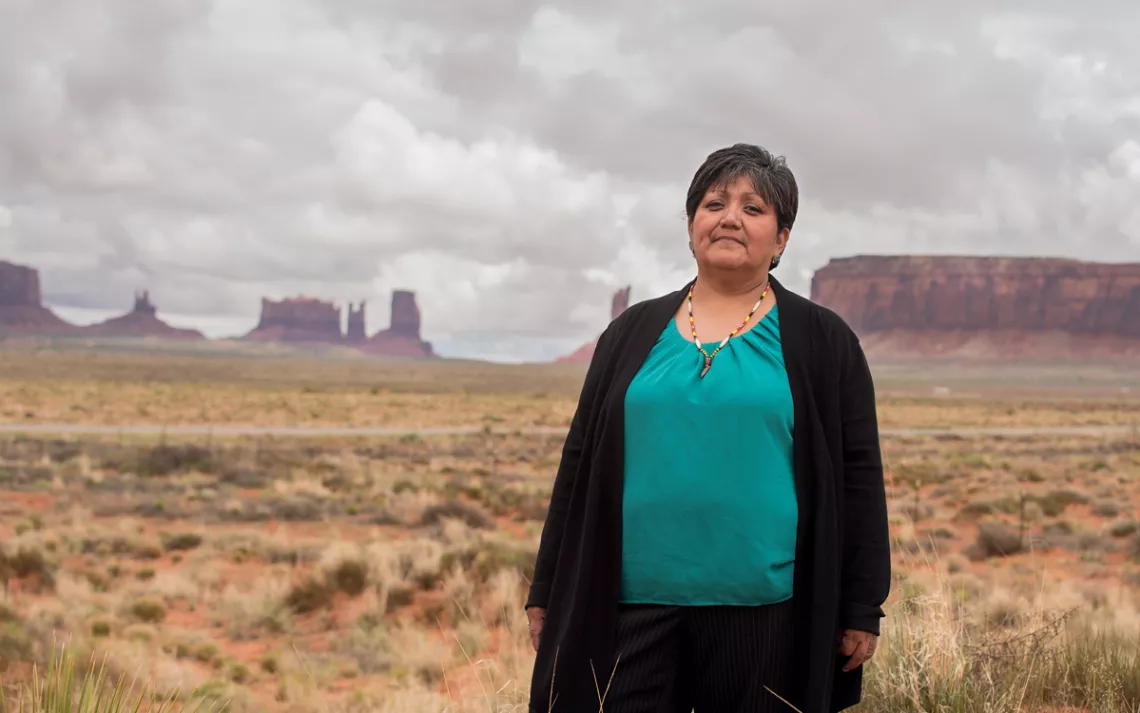
Regina Lopez-Whiteskunk was a councilwoman of the Ute Mountain Ute during the campaign to establish Bears Ears National Monument. “We knew we were speaking for Native Americans, but what we didn’t anticipate was becoming leaders for the people of Utah beyond the tribes.” | Photo by Justin Clifton
Roosevelt's speech was one salvo in a war still going strong more than a century later, a war that has intensified over the last year. While some fights—like the one over the fate of the Grand Canyon—might feel safely won, they really never are. Old threats return in new ways. Standing on the canyon's edge in late January, I knew that within weeks our newest major national monument, the 1.35-million-acre Bears Ears in southeast Utah, would be drastically reduced in size. The battle over Bears Ears was already raging.
We have entered another one of those periods where nothing feels safe, where everything is up for grabs. And it isn't just land that is under threat; it's the very law that was used to save much of that land in the first place.
PRESIDENT BARACK OBAMA established Bears Ears National Monument in December 2016, at the very end of his administration, by using the powers granted to him under the Antiquities Act. "An Act for the Preservation of American Antiquities" was approved by Congress on June 8, 1906, after its lead sponsor, the even-keeled Representative John F. Lacey of Iowa, shepherded it through both houses. Lacey, known for his eccentric love of birds and his fascination with pre-Columbian artifacts, was hardly a radical, and the act, too, seemed fairly innocuous, with its goal of saving "historical landmarks, historic and prehistoric structures, and other objects of historic and scientific interest." Yet the act was ambitious in that it granted the president broad authority to designate new monuments without any further involvement by Congress. From its inception, the Antiquities Act was solely a tool of the president's, and the president at the time was not one to leave effective tools unused.
Theodore Roosevelt went right to work. Although he had been successful in establishing national forests and wildlife refuges, Roosevelt felt that Congress had impeded his larger vision of protecting grand swaths of land from development. The Antiquities Act had grown out of concern that Native American artifacts were being looted, and many of the earliest national monuments were ruin-rich places, like New Mexico's Chaco Canyon. But Roosevelt quickly discovered a certain elasticity in the law, finding that even landscapes without artifacts had "scientific value," and he was soon using the law to protect large acreages. At the Grand Canyon, for instance, when Roosevelt's efforts to create a national park were frustrated, he designated 800,000 acres as the Grand Canyon National Monument. (Congress would later establish Grand Canyon National Park, creating a template of sorts for turning monuments into parks, which has happened at many places, from the Olympic Peninsula rainforest to the Mojave Desert.)
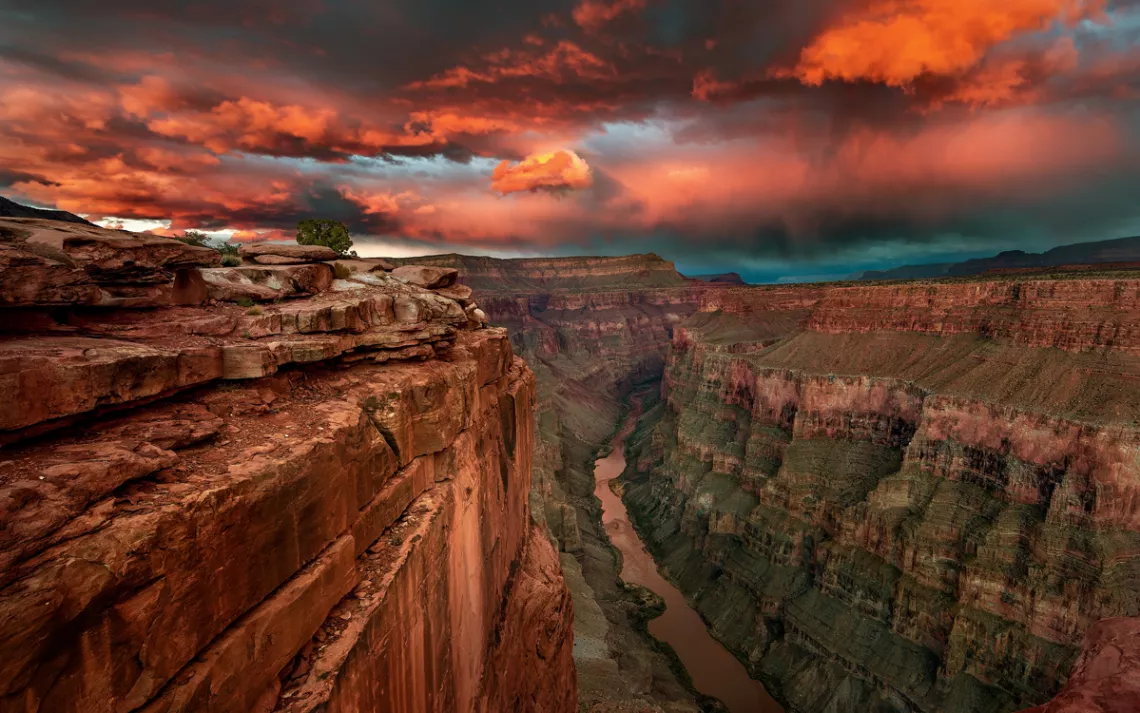
The main gorge of the Grand Canyon may be protected as a national park, but a uranium mine lies just miles from the South Rim. | Photo by Chris Moore/Tandem
Bears Ears, dense in Native artifacts, is just the sort of site that John F. Lacey had in mind when he ushered the Antiquities Act through Congress. Yet even though Obama's declaration was firmly grounded in the original ideals of the law, the Bears Ears designation was also unique and historic. That is because there was one important difference between Bears Ears and all the other national monuments that had come before it. It was—and, even though contested, remains—the first national monument to grow out of the thinking, study, support, and political power of Native American nations.
Before visiting the Grand Canyon, I traveled to the Ute Indian Museum in Montrose, Colorado. I went there to see the museum's then education director, Regina Lopez-Whiteskunk, who had been a councilwoman of the Ute Mountain Ute Tribe during the years-long campaign to establish the monument. As we sat down in her office, I told her about a conservative friend of mine who had said that what he really objected to was the fact that saving land like Bears Ears was "not what the Antiquities Act was meant for in the first place."
She laughed.
"I'd like to talk to him," she said. "I feel like I have the act memorized. We went over it so carefully, every word and aspect."
Over the next hour, Lopez-Whiteskunk gave me a brief history of the creation of Bears Ears. It is a story that has been obscured as the legal battle over the land escalates. The story began when a Navajo group, Utah Diné Bikéyah ("people's sacred lands"), began culturally mapping the Bears Ears area, a section of southeast Utah that is sparsely inhabited by people but full of cultural and religious significance for Native Americans. Opponents of the Bears Ears designation sometimes portray it as a sudden decision by Obama. But in fact its roots are Diné Bikéyah's assiduous collection of data on sensitive cultural-historical areas in the region, which contains over 100,000 Native American sites.
Once the initial work was done, the Navajo organization invited other tribes to join in the creation of a proposal for a national monument. The five nations that would eventually make up the Bears Ears Inter-Tribal Coalition—Navajo, Hopi, Ute, Zuni, and Ute Mountain Ute—were not exactly on the best of terms. The Utes were suing the Navajos over water issues; the Navajos and the Hopis were in active litigation over land issues.
"Those first meetings were so intense," Lopez-Whiteskunk told me. "And we had some really long meetings. We had to heal ourselves first. We agreed that when we met, all other issues, all other politics, would stay outside. In the end we set our disagreements aside and focused on the preservation of the land, continued access to the land, and trying to keep the mining and the roads out."
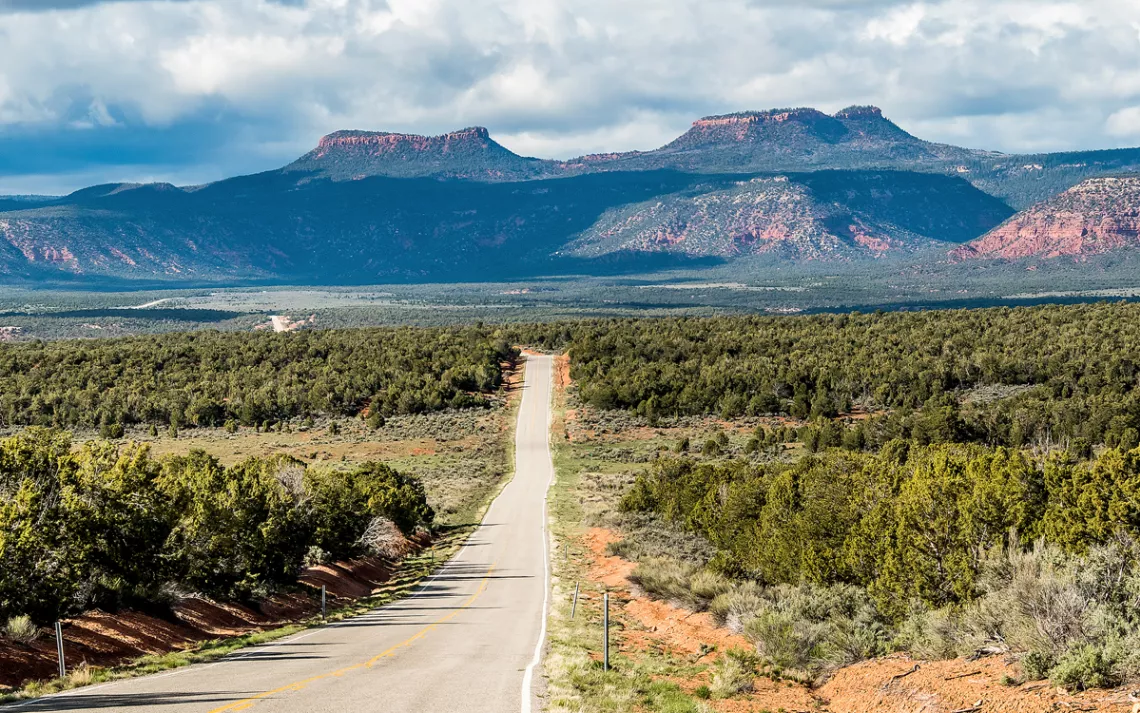
For the five Native nations that have struggled to protect Bears Ears, the land is a place of origin, history, and culture. | Photo by Denis LeBlanc
The coalition proceeded slowly and with a careful, detail-oriented focus. Once the proposal was hammered out, it was time to turn outward. Lopez-Whiteskunk suddenly found herself thrust into a very public role: "We knew we were speaking for Native Americans, but what we didn't anticipate was becoming leaders for the people of Utah beyond the tribes. And then even for people beyond Utah. We suddenly had all these people and environmental groups saying, 'We support what you're saying; it's valuable,' and asking, 'What can we do?' 'Well,' we said, 'you can let us lead the charge, respect our sovereign voices.'"
The next thing Lopez-Whiteskunk knew, she was in Washington, D.C. Testifying in front of Congress. Meeting President Obama and asking him to declare Bears Ears a national monument. There were times when it all felt surreal.
"It was such an empowering feeling to know that I, as a Native American, could be in Washington, D.C., and feel the movements of my government and participate, and feel like I wasn't being threatened or belittled, or have someone else speaking 'in my best interests.' I was being taken seriously and being part of the conversation and lending my Indigenous knowledge and expertise. I really felt a part of this country. A part of the democratic process."
When Obama proclaimed Bears Ears a national monument, there was a sense of joy among the tribes. For the first time, traditional knowledge and a Native view of the land would be integrated into a national monument from its inception.
This Bears Ears backstory is crucial, since it reveals not only what will be lost if the courts uphold the Bears Ears reductions, but also all that was, however briefly, gained. What might be lost, besides tribal influence and Native cultures' ascendance, is this: protections for over a million acres of land. The remaining 200,000 acres of still-protected areas would be divided into two noncontiguous sections, Indian Creek and Shash Jáa, the latter containing the actual Bears Ears, the prominent peaks that give the monument its name.
After I said goodbye to Lopez-Whiteskunk, I explored the museum, taking a while to study a display of treaties that had led to the reduction of Ute land, from half of Utah and most of Colorado in 1849 to a few final tiny island slivers by 1880. It was a narrative of rapid and dramatic diminishment. And now here we were again, back in the same narrative. For a while, there had been a sense of possibility that the people in D.C. would keep their word. Now it looked like that promise, like so many earlier ones, would not be kept.
Just another broken treaty.
EVERYWHERE I WENT in the Southwest, I found evidence of the dual nature of the region. The route I drove to the Grand Canyon is the same one that trucks use to transport uranium to the White Mesa Mill in Utah, the only working mill of its kind in the United States (for the moment). In Monument Valley, I stared up at the evidence of the failed uranium mines on the mesa walls. I was reminded, not for the first time, that what for some is a hiker's paradise and for others is a vast reservoir of cultural significance remains, for others, a resource colony.
The Bears Ears buttes were my ultimate destination, but after my morning on the Grand Canyon rim, I decided to drive south instead of north. I wanted to explore the Canyon Mine, which sits about 10 miles southeast of the Tusayan entrance to the Grand Canyon as the crow flies. The mine is run by a Canadian company named Energy Fuels, the same company that owns the White Mesa Mill. Energy Fuels is also the same company whose executives tagged along with Interior Secretary Ryan Zinke when he toured Bears Ears in late spring 2017, and the same company that provided Zinke with area maps detailing the 300 uranium-mining claims inside the Obama-designated monument—the very same 300 claims conveniently left outside the newly drawn boundaries. (Before becoming deputy administrator of the EPA, Andrew Wheeler, who now heads the agency, spent several months lobbying Interior Department officials on behalf of Energy Fuels.)
A family driving to the Grand Canyon on vacation likely wouldn't notice that this mine is there. That's because it's hidden down miles of dirt roads in the Kaibab National Forest. I wouldn't have been able to find it myself if a friend who works for the Grand Canyon Trust hadn't told me how to get there. "Just follow the power lines," he said. Which, metaphorically at least, is all you ever really have to do.
I followed the lines along the increasingly muddy road. The forest of ponderosa pines was beautiful; at one point a flock of two dozen pinyon jays, a blur of blue, flew in front of my windshield. When the trees finally parted, a fenced-in area with barbed wire up top appeared. The mine was in active standby, with a couple of workers operating the water pumps and maintaining the site. For a high-tech operation, it looked anachronistic: The head rig was a rickety-looking thing that you could imagine a high-dive stuntman leaping off of at an old-time carnival, and the water wheel below looked like an equally rickety Ferris wheel.
"This is not about energy," Zinke said repeatedly as he sought to defend the downsizing of Bears Ears and Grand Staircase–Escalante National Monuments. Zinke has maintained that the decision to reduce the monuments grew out of his fact-finding mission in the months before the decision was announced. But anyone who lives in what the Utah-born writer Bernard DeVoto called "the plundered province" of the West knows that Zinke's statements were suspect. Dig deep enough into any conflicts over public lands and you will be reminded of a simple truth: These days, it's almost always about energy.
Despite Zinke's denials, it is now clear that the uranium industry lobbied hard to have Bears Ears and Grand Staircase–Escalante reduced. Publicly released Interior Department emails also show that the Bears Ears map was redrawn with potential oil and gas reserves in mind, and that a central motivation for the reduction of Grand Staircase–Escalante was the desire to get at coal reserves. (In June, another Canadian mining firm, Glacier Lake Resources, announced its acquisition of cobalt and copper deposits at Colt Mesa, a site that for more than 20 years had been protected as part of the Grand Staircase–Escalante monument.)
If energy is the constant, then the variable in the reduction of Bears Ears is what one prominent Utah environmentalist calls "Trump's desire to erase all things Obama." Zinke's behavior during his "listening tour" certainly calls into question whether the administration had any real interest in hearing all sides. One of the people Zinke met with when he was "gathering facts" was a young woman named Amanda Podmore. She is the assistant director of Friends of Cedar Mesa, a Utah environmental group, and one morning, over coffee in Bluff, Utah, she told me the story of meeting Zinke.
Podmore is a petite woman, a fact she was quite conscious of when meeting the secretary. "The day before I met Zinke, I was hiking in Bears Ears with some of our supporters," she said. "One of them, an older gentleman, told me, 'You know what? You're the most important person in the room tomorrow, because you're the only person in the room who is not an old, white male.' And that gave me the sort of courage I needed to face Zinke."
"Sure enough, when we got in the room, Zinke looked at me like, 'What are you doing here, small young woman?'" Podmore told me.
"Still," she continued, "I was hopeful that we would have a truly adult-to-adult professional engagement. We came prepared with hundreds of pages of the archaeological records and documents from the public review. We had such a naive eagerness as we sat down, but he immediately deflated us. Zinke just sat back in his chair, and interrupted the folks who were introducing us, and leaned back in a power pose with his hands behind his head, and said, 'Let me tell you how this is going to be.' He launched into this whole spiel about how he was reorganizing the DOI. It was a pure power play, wasting our time about an unrelated topic for 15 minutes. So by the time we had a chance to discuss the stewardship work we do in Bears Ears, the archaeological sites we know would be threatened by any action to reduce the boundaries of the monument, we were kind of at a loss for words."
The group from Friends of Cedar Mesa explained that only about 6 percent of the land in San Juan County had undergone a thorough archaeological survey and that even that small 6 percent survey had yielded over 30,000 cultural sites. So, extrapolating, the group and its Native partners conservatively estimated that Bears Ears had over 100,000 sites of archaeological value and perhaps as many as a quarter million.
"But when we started to tell him this," Podmore said, "he interrupted us and said, 'No, no, no, no. I'm a facts guy. I only go with the facts. I don't go with estimates.'"
This was supremely insulting to a group that had dedicated itself to learning about and protecting those sites. Podmore told me, "It showed he had already made up his mind about Bears Ears."
I WAS STILL EAGER TO MAKE IT to Bears Ears, but after I left the Canyon Mine, I kept heading south. My destination was Flagstaff, Arizona, where a city council meeting was being held to discuss uranium mining on public lands near the Grand Canyon. In 2012, the Obama administration had placed a moratorium on uranium mining around the canyon, but in November 2017, Trump's Forest Service recommended that the ban be reconsidered. Many locals were nervous about the possible reversal. According to a 2010 report by the U.S. Geological Survey, existing uranium mines had contaminated 15 springs and five wells in the region, and the Havasupai Tribe, which lives inside the canyon, worried that Havasupai Creek, its one source of drinking water, could be jeopardized if additional mining were to begin.
I found myself tied in knots during the drive. I had recently committed to writing a book about Theodore Roosevelt and public lands, and I wanted to make Bears Ears the centerpiece of that project. But the Utah environmentalists I'd talked to were not wild about the idea of yoking what was essentially an Indigenous struggle to a president whose attitude toward Native Americans was, to put it mildly, unenlightened. The tension revealed the one tragic flaw in the whole public lands ideal. While we've heard America's national parks called "the best idea we ever had," the part of that idea that was never quite so great was the exclusion—and sometimes expulsion—of Native peoples from protected areas.
It seemed to me that Bears Ears National Monument, as originally conceived by Diné Bikéyah and others, was a better idea. Something akin to a Native American attitude toward the land, and its sacredness, had always been vaguely floating around in the minds of those who early on fought to preserve this country's public lands, even if their behavior when it came to actual Native Americans didn't reflect this. But until Bears Ears, Indigenous thinking played little part in the creation of our national monuments.
Listening to Lopez-Whiteskunk describe her coalition's use of the Antiquities Act, I began to see that what had evolved in the creation of Bears Ears was not just inspiring; it was original. Here was a confluence of the Indigenous ideals of respect, worship, and knowledge of the land and the revolutionary European American notion of public lands. That latter ideal, despite its flaws, really was one of the best things this country has ever done. Now, conjoined with the work of Native peoples, it had been given new life. Imagine: a national monument where traditional knowledge directs land management, a place where ancient artifacts are considered not objects of mere archaeology but living history.
The city council meeting in Flagstaff was packed with people waiting to make their comments. The first speaker succinctly presented the economic case against reopening uranium mining, explaining that Flagstaff's economy was not driven by extractive industries but by the people who traveled there to hike, raft, and fish. Another speaker explained that even with the ban in place, wind and water continued to spread uranium across the landscape. The speaker described how, in one experiment, dye injected into the groundwater traveled 6,000 vertical feet and 26 miles in just a month.
Then Richard Watahomigie, a councilman for the Havasupai Tribe, took the mic. In a quiet, deep voice he thanked the city council for hosting the meeting and voiced his support for maintaining the mining moratorium. "I just want to say that this is a very important issue not just for the Havasupai Tribe but for the canyon itself," he said. "What happens upstream ends up downstream."
Watahomigie spoke directly and passionately, and I sat up a little higher in my chair. But I was not ready for what came next. What came next I couldn't have scripted. His words seemed to reach across a gap of time and culture.
"Let me remind you," he told the crowd. "On May 6, 1903, President Theodore Roosevelt stood on the rim of the Grand Canyon and delivered one of his famous speeches. He said, 'Leave it as it is. You cannot improve on it. The ages have been at work on it, and man can only mar it.'"
Leave it as it is. For a brief moment, it seemed I had found the confluence of ideals I had been dreaming about.
FOR THE FIRST TIME IN HOURS, Greg Lameman and I couldn't see both of the twin buttes that give Bears Ears its name. That's because we were sitting in the shadow of the western butte, or western ear, and staring over at the eastern one, a resplendent orange-red streaked white with snow.
If national newspaper headlines were any indication, this place was the center of the universe, but it sure felt empty. The silence was spectacular, up above the rest of the world. Lameman is a Navajo man who lives on reservation land south of Bluff, and we have known each other for six years, having first met when he was my guide on the San Juan River. He smoked a hand-rolled cigarette, and we sipped from cans of beer, celebrating our ascension after a steep and heart-thumping climb through the snow.
"Is this sacrilege?" I asked, nodding toward the beer.
"Possibly," he answered.
But if Lameman was aware of the sacredness of the place, he was also on familiar terms with its dual nature. "My grandfather worked in a uranium mine right up here in Bears Ears," he told me.
There's a word in Navajo for "places that should be left alone": Nahodishgish. Theodore Roosevelt couldn't have said it better. Below us the landmarks of the Four Corners were laid out like a map, and Lameman pointed them out to me: Navajo Mountain here and Monument Valley there, and over there the place where Grand Gulch starts as a narrow wash. It was stunningly beautiful country, but neither of us could forget that it was also ground that was coveted for what lies below it. The U.S. government maps offering it protection had been redrawn, and that redrawing made it apparent that a Canadian uranium company had more influence with this "America First" government than a coalition of America's first people.
If one were to consider the misdeeds of the current president and rank them in a tournament of malfeasance, few would give the reduction of Bears Ears a top seed. With children being separated from their parents, and seeming support for white nationalist groups, and all the rest of the coarseness that goes with the daily Trump show, it might not seem that saving some arid land in Utah should get people too excited. But I would contend that this is because most of us do not understand that Bears Ears is not just about the potential destruction of the land, but also about the destruction of an ideal. Or rather, the destruction of a new confluence of ideals.
Hoon'Naqvut, Shash Jáa, Kwiyagatu Nukavachi, Ansh An Lashokdiwe. The words are different for each of the tribes, but the meaning is the same. For the five Native nations that have struggled to protect Bears Ears, this land is a place of origin, of stories, of history, of culture. For others, it is a place of beauty, a place in which to connect to the natural world. It is also more than that. It is about a flowing together of Native respect for the land and the ideals, however flawed in practice, that created the national parks, national monuments, and other public lands. And it is about belief itself, the notion that there are still things worth fighting for, large and great and hard-to-express things, in a world growing increasingly crass and petty and small.
This article appeared in the September/October 2018 edition with the headline "Land Grab."
MORE ONLINE
Read about how public lands opponents harassed Native Americans and their allies at the fourth-annual Bears Ears Summer Gathering: sc.org/barbed-wire.
Learn about what “Shash Jáa” means in Navajo and why some people are concerned that the Trump administration’s renaming of the Bears Ears monument might be a cynical ploy to divide Native American nations: sc.org/shash.
 The Magazine of The Sierra Club
The Magazine of The Sierra Club

